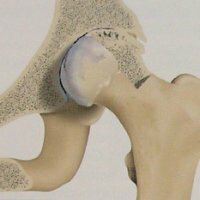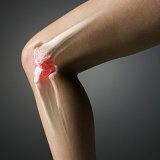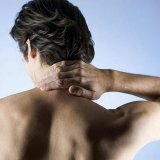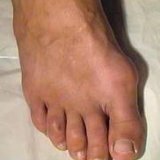Osteoarthritis of the hip joints

Hip arthrosis, which is otherwise called coxarthrosis, can occur in people over forty years of age. Most often, the disease begins with one of the hip joints, gradually shifting to others.
The main symptoms of
The main symptom of coxarthrosis is pain in the groin, which rises to the lower part of the thigh along the front or side of its surface. Most often the pain goes to the middle of the thigh, in some cases to the knee. Below the knee, it can descend only in exceptional cases, then it can reach the middle of the shin, but no cases have been recorded for the pain to spread to the toes. By this sign, arthrosis of the hip joint can be distinguished from other similar diseases, such as a herniated intervertebral disc and others.
As a rule, painful sensations make themselves felt if you want to get up from a lying or sitting position and walking. And in the first case, the pain is particularly strong. After the patient has passed a little, the pain is weakened, but if you walk for a long time, they are gaining strength again. Normally, the patient feels himself only if his body is without movement, for example, when he is sitting or lying.
Treatment of arthrosis of the hip joint
The procedure for the treatment of arthrosis of the hip joint is chosen by the doctor depending on the stage at which the disease is located. At the first stage, a complete cure is possible, although the course of treatment can not be called easy, but with a comprehensive approach it is quite possible.
The second stage is no longer amenable to cure completely, as the bones are already deformed and can not be returned to their original form. However, it is possible to improve the patient's well-being by means of increasing the articular blood circulation, by special methods providing the cartilaginous tissue with nutrition and dilating the joint ends, that is, a gap widens around the diseased joint. This, of course, will not help to restore the joint back to its former form, but it will reduce pain and help to raise its mobility.
In the third stage of arthrosis of the hip joint, when the cartilaginous tissue becomes very thin and the articular area in the femoral head is heavily deformed, in most cases surgical intervention is prescribed. No more than thirty percent of the total number of patients can avoid surgery, through prolonged and difficult treatment.
Types of operations performed with coxarthrosis
In the treatment of arthrosis of the hip joint, two types of operations are used. The first of them - endoprosthetics, with his joint, subjected to deformation, is completely replaced by an artificial one. In the second, which is called arthrodesis, the edges of the bones that connect with each other are cut off and adjoined to each other so that in the future they can grow together.
Advantages and disadvantages of
operation First of all, it is worth saying that these operations are technically very complicated. Each surgical intervention in this case is fraught with infections and complications, which is a significant blow to the patient's body, especially in the elderly. After the endoprosthetics the pains go away, and the mobility returns. It is mainly performed for patients older than sixty years, but you should be aware that with it the likelihood of complications is extremely high. Also, if an error has been made in fitting the joint head, the prosthesis can loosen up, which will necessitate a second operation. And even if the operation was performed impeccably, the prosthesis should be replaced after 15, and preferably in 10 years.
Carotid arthrodesis helps to reduce or completely remove pain, but at the same time, because of the joint fusion, its mobility is lost, which leads to a decrease in the ability to work and the need to compensate for the lack of mobility of the joint with increased load on the waist and knee, which makes the gait unnatural. Also, these overloads contribute to the occurrence of pain in the lumbar region. In addition, the operated person has discomfort when sitting or when he tries to climb or go down the stairs.



